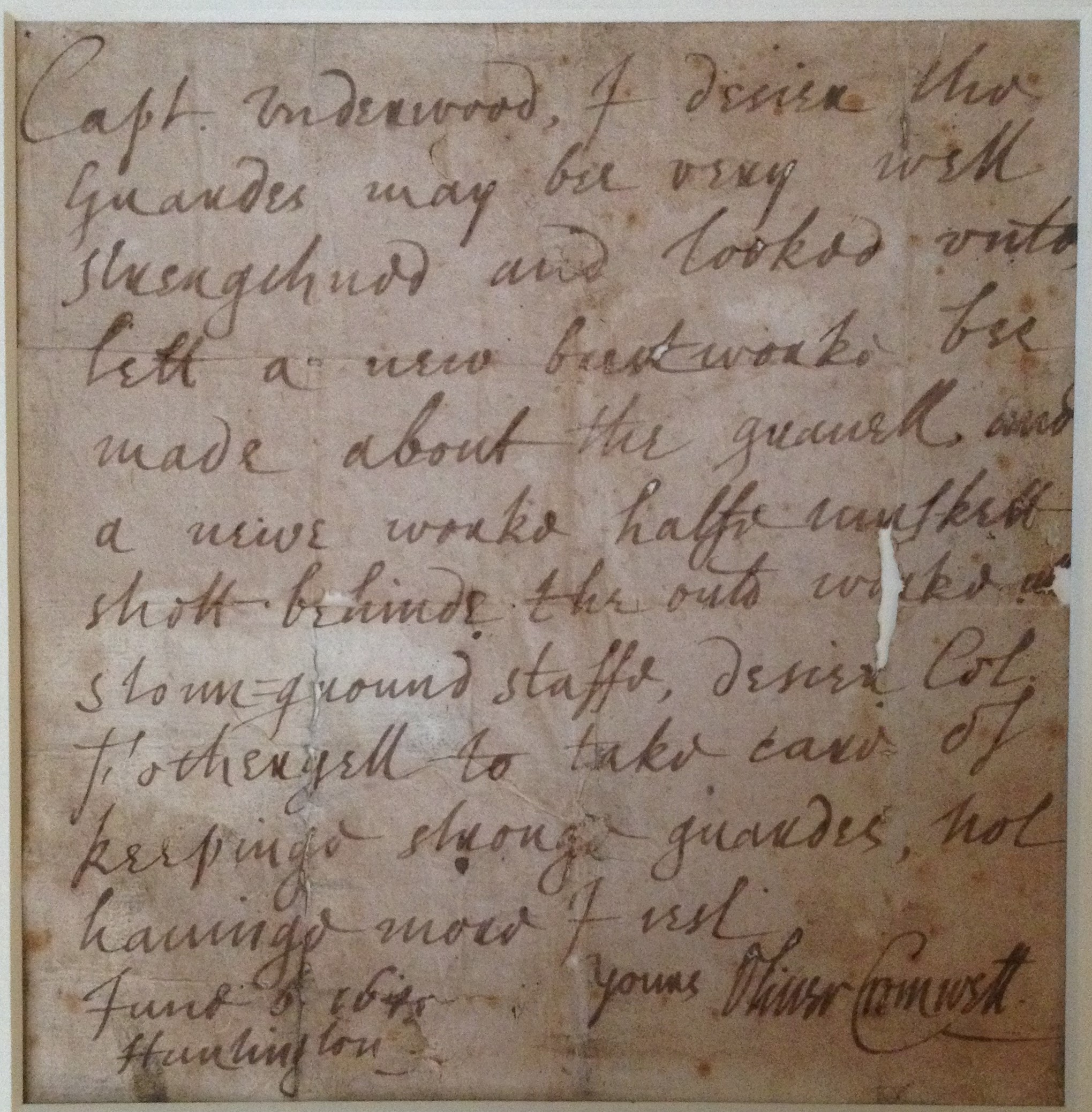Key Collections
The Cromwell Museum is home to the best collection in the world of items relating to Oliver Cromwell. We have a collection of nearly a thousand objects including paintings and works of art, arms and armour, personal items, written and printed documents, coins and medals and commemorative items relating to Cromwell’s life and times.
Around 70% of our collection belongs to the Museum; 10% is kindly loaned to us by other museums and institutions including the Royal Armouries, Cambridgeshire Archives and the Museum of London.
Just under 20% of our collection is on long term loan to us from the Bush family, Cromwell’s immediate descendants. We are very grateful for their ongoing support and kindness in sharing their incredible collection of items which have been handed down through the family over the last 370 years.
This section provides more information about just some of the highlights of the collection; most of the items here are part of our regular displays. We aim to be able to have a comprehensive searchable database of the entire collection accessible via this website over the next couple of years.
About a third of the Museum’s collection is on display at any one time; we welcome enquiries to view other items not currently on show by appointment. Please contact us for more details.
‘Eikon Basilike: The Portraiture of His Sacred Majestie in His Solitude & Sufferings’, 1649.
‘Eikon Basilike’ (Greek for “Royal Portrait” or “Image of the King”) was published only ten days after Charles I’s execution and became a bestseller, the greatest publishing phenomenon of its time. It was reprinted in 35 different editions in London in 1649. It was claimed that the book was written by King Charles himself. It is more likely that it was written by others, perhaps with access to some of Charles’ papers and letters. This iconic illustration at the beginning of the book depicts Charles as a Christian martyr receiving divine inspiration as his earthly crown is set aside. Coupled with Charles’ dignified death and robust defence at his trial, ‘Eikon Basilike’ helped cement the image of Charles as a heroic martyr for the Royalist cause.
‘The Royall Entertainment of the King by the Royalists of Huntingdon’, 1645.
A Parliamentary newsbook account of the capture of Huntingdon by King Charles I in August 1645. Charles spent two nights staying at the George Inn, and the pamphlet alleges various depredations by his troops whilst billeted in the town.
‘The Court and Kitchen of Elizabeth, commonly called Joan Cromwell’, 1664.
This book purports to be and (in all likely was) the cookery book of Oliver Cromwell’s wife, published along with an essay on the evils of the Cromwellian court as a piece of Royalist propaganda. The name ‘Joan’ was considered demeaning and to have low associations; many of the recipes were considered to be ‘common’ including Fenland ingredients such as eels.
The Cromwell Museum has a rare original copy of the book, which creates a lot of interest amongst visitors who are fascinated by the recipes, many of which have a distinctly local flavour, given that the Cromwells lived in Huntingdon for over half their lives.
Henry Cromwell’s Letter Book, 1657 – 1659.
The letter book of Henry Cromwell as Lord Deputy Governor General of Ireland, containing copies of all his correspondence as a means of keeping a copy of all letters sent, and is an important source of information on his administration. Letters date from 24 November 1657 to the 15 June 1659. MS in ink, c. 120 pages in folio of contemporary vellum. Long Term Private Loan.
“The Humble Petition and Advice presented unto his Highness the Lord Protector of Knights, Citizens and Burgesses assembled”, 1657.
‘The Humble Petition and Advice’ was Parliament’s suggestion for revisions to the Republic’s written constitution (the original being the ‘Instrument of Government’ agreed in 1653). This included offering the crown to Cromwell, which after some indecision he rejected. The other terms of the ‘Humble Petition’ were largely adopted, with other modifications including the recreation of a second chamber. This is an original printed copy, bound in with several other titles. Long Term Private Loan.
Letter to Captain Underwood, signed by Cromwell, June 6th, 1645 from Huntingdon.
This letter, written in one of Cromwell’s last documented visits to his home town, was written just a few days before his appointment as Lieutenant General of Horse in the New Model Army, and eight days before the Battle of Naseby. It gives instructions to Captain Underwood to strengthen the defences at a local garrison.






